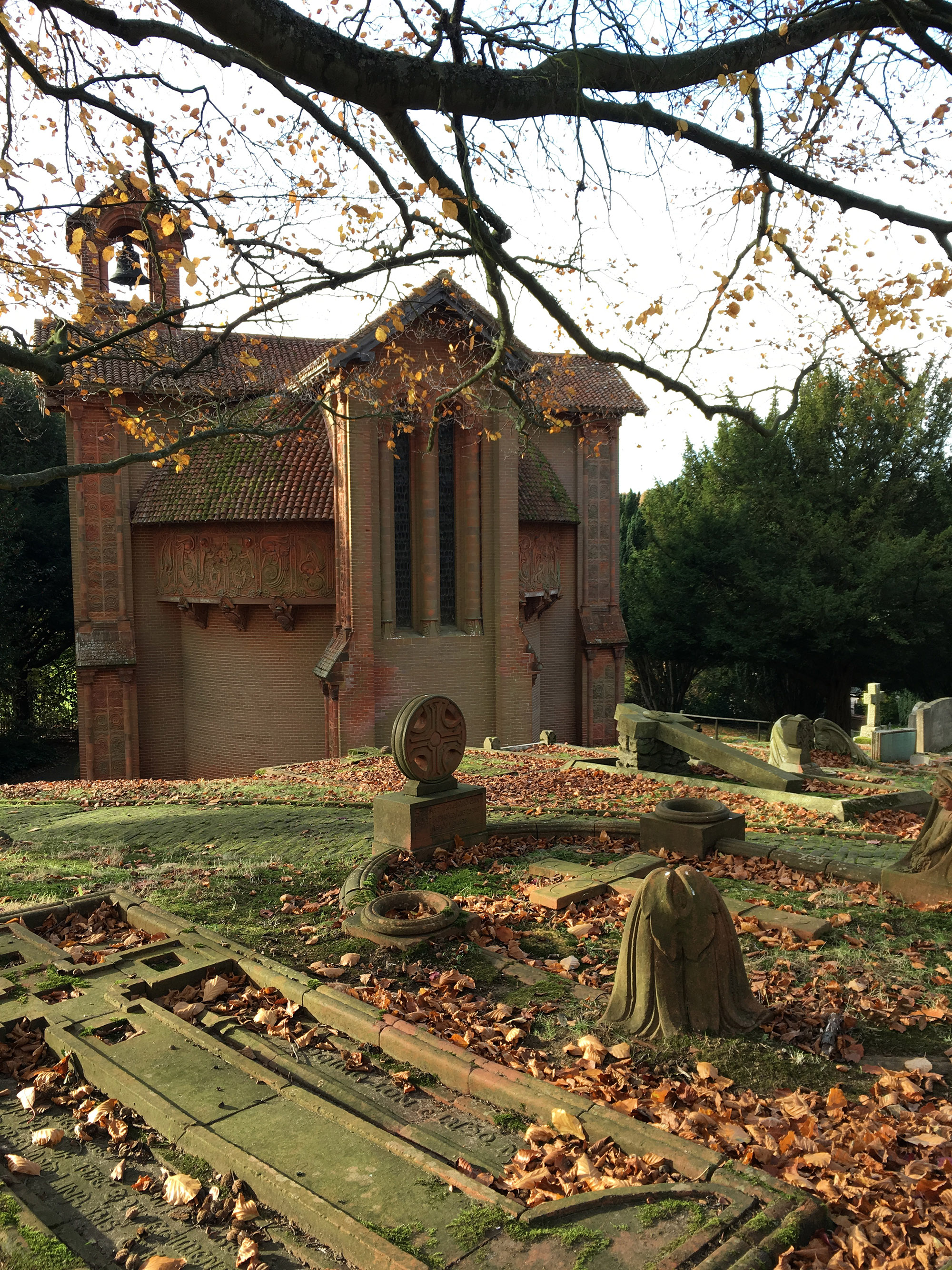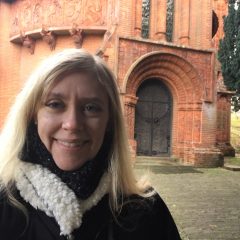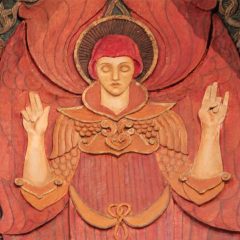
Dissertation
A Sign in the Pattern: The Creation of Mary Seton Watts’s Ideal Design in the Compton Mortuary Chapel (Surrey, England, 1898)
Abstract
This dissertation addresses the hierarchal categorization and canonization of the arts as influenced by dominant power structures through the work of turn of the century artist Mary Seton Fraser-Tytler Watts and the Compton mortuary chapel, or Watts Chapel, project in the Guildford district of Surrey, UK. The built environment of the Compton mortuary chapel and cemetery was largely conceived and designed by Mary Watts. It evades strict categories separating decoration from architectural design just as it also evades stylistic categorization. The chapel project confuses and resists boundaries, demonstrating that categories are often arbitrary and lead to privileged hierarchies.
The Compton chapel project resides outside of the traditional economy of commissioned artwork and participates in the philosophy of the Arts and Crafts Movement through the emphasized use of local materials and a community of labor. Mary Seton partnered with artist husband, George Frederic Watts, in forwarding the cultural philanthropy movement in a belief that artistic creation is an essential element of human nature within the context of a perceived de-humanization of labor through industrialization and colonization. The Compton mortuary chapel project participates in a social movement through the Home Arts and Industries Association (HAIA) to enable individuals living in rural areas access into the arts and crafts economy while also disrupting commercialization.
The stylistics of the chapel designed by Mary Watts are inspired from multiple sources including Neo-Romanesque, Celtic Revival, “Second Phase” Pre-Raphaelitism, Symbolism, and Art Nouveau. The changes from one style to another are understood as communicating an evolution of ideas concerning the economy of labor and gender roles at a moment of transition from the nineteenth to the twentieth century. Mary Watts utilizes an artistic grammar of traditional symbolic types selected and juxtaposed with varying styles to create a new language of images. Decorative motifs are attached to intellectual ideals with social and political implications in what might be called Ideal Design. Through the creation of symbolism drawn from multiple cultures across time alongside powerful, feminized, non-denominational figures within a spiritual space, the Compton chapel provides a vision of human equality across boundaries of gender, nationality, and religious belief.
Bio
Katie Tuft will defend her dissertation in June for the School of Art + Art History + Design at the University of Washington in Seattle. Her research crosses the boundaries often separating fine art, architecture, and design through the study of a built environment created at the turn of the nineteenth to the twentieth century when such categories were being created and questioned. She has worked as a Teaching Assistant and Researcher while pursuing her graduate work.
Committee
- Susan P. Casteras, chair (Art History)
- George K.Behlmer, GSR (History)
- Meredith L. Clausen (Art History)
- Estelle C. Lingo (Art History)




